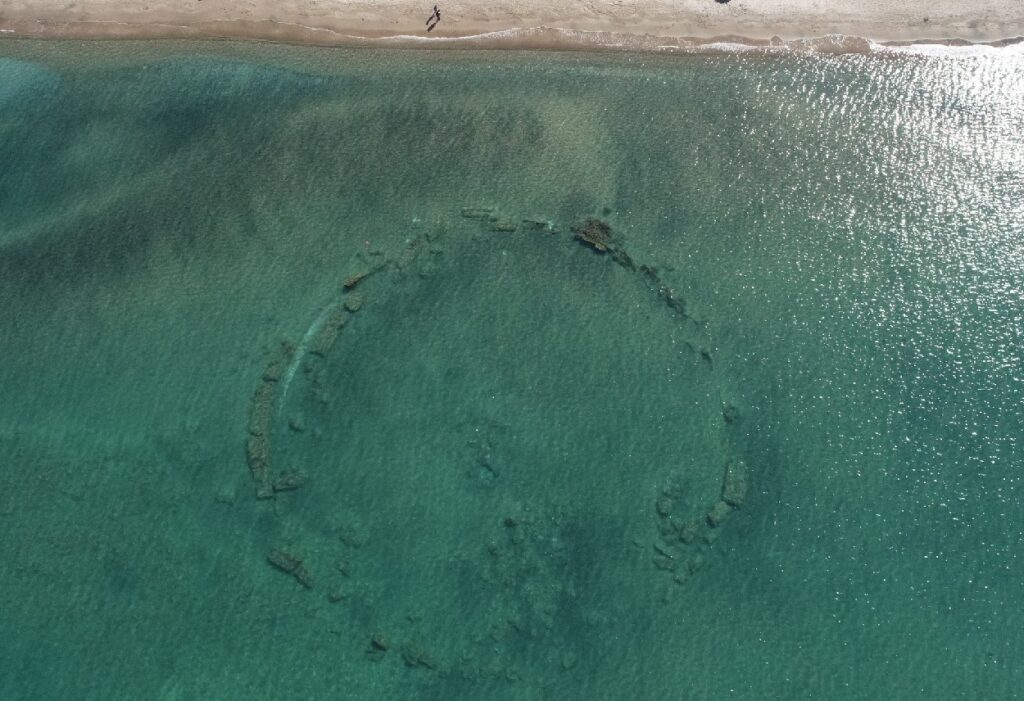Previous studies in 2021 found a column made from cipollino marble, leading to the discovery of a submerged circular structure measuring 50 metres in diameter.
According to experts, the structure is a pavilion belonging to a Roman villa, the extent of which is yet to be uncovered.
Excavations by the Underwater Archaeology Service of the Superintendency, in collaboration with CSR Restauro Beni Culturali, have identified two belts of brick walls built with a double layer of triangular bricks and mortar.
The team have uncovered opus spicatum (“spiked work”) flooring, a type of masonry construction of bricks laid in a herringbone pattern. During the Roman period, this pattern was primarily decorative and was typically used for paving, though it was also occasionally employed as infill in walls.
Also uncovered are traces of opus signinum material, a form of Roman concrete that uses small pieces of broken pot, including amphorae, tiles or brick. Opus signinum is mainly used for its waterproofing and damp resistance, where it was employed in buildings such as Roman baths, aqueducts, and cisterns.
Archaeologists are yet to date the structure, however, the trend of using opus signinum by the Romans began in the 1st century BC, and was phased out by the 2nd century AD for patterned styles of pavement.
According to a press statement by the Soprintendenza Archeologia Belle Arti Paesaggio Etruria Meridionale, the architectural elements suggest that the pavilion represents part of a luxurious Roman villa which is buried under sand somewhere in the vicinity.
Sources : Soprintendenza Archeologia Belle Arti Paesaggio Etruria Meridionale
HeritageDaily is a dedicated team of passionate historians, archaeologists, writers, and researchers, who are committed to delivering accurate, independent, and insightful content about our rich global heritage.
HeritageDaily LTD – Suite/Unit 40 17 Holywell Hill, St Albans, Herts, United Kingdom, AL1 1DT
